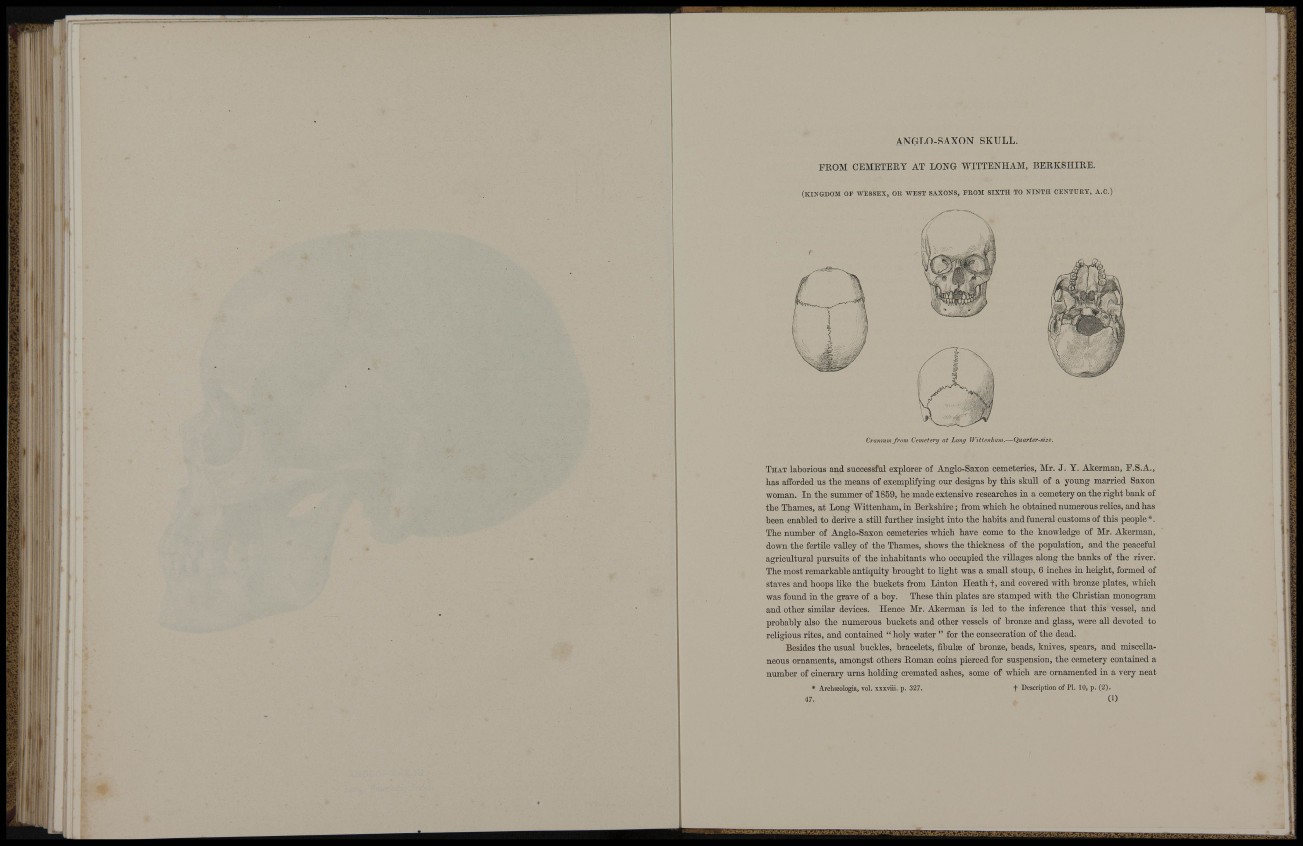
I
1 •!
Si : !
1 • i
,1 'P 1
iiiik .
I
... i ' 11 ' i Ir
II I
ill 'I,' 1"1
A N G L O - S A X O N SKULL.
PROM CEMETERY AT LONG WITTENHAM, BEEKSHIEE.
(KINGDOM OP -WESSES, DE WEST SAXONS, PEOM SIXTH TO NINTH CENTURY, A.C.)
Cranium from Cemetery at Long Wittenkam.—Quarter-size,
THAT laborious and successful explorer of Anglo-Saxon cemeteries, Mr. J. Y. Akerman, E.S.A.,
has afforded us the means of exemplifying our designs by this skull of a young married Saxon
woman. In the summer of 1859, he made extensive researches in a cemetery on the right bank of
the Thames, at Long Wittenham, in Berkshire; from which he obtaiued numerous relics, and has
been enabled to derive a still further insight into the habits and funeral customs of this people*.
The number of Anglo-Saxon cemeteries which have come to the knowledge of Mr. Akerman,
down the fertile vaUey of the Thames, shows the thickness of the population, and the peaceful
agricultural pursuits of the inhabitants who occupied the villages along the banks of the river.
The most remarkable antiquity brought to light was a smaU stoup, 6 inches in height, formed of
staves and hoops Kke the buckets from Linton Heath t , and covered with bronze plates, which
was found in the grave of a boy. These thin plates are stamped with the Christian monogram
and other similar devices. Hence Mr. Akerman is led to the inference that this vessel, and
probably also the numerous buckets and other vessels of bronze and glass, were all devoted to
religious rites, and contained " holy water " for the consecration of the dead.
Besides the usual buckles, bracelets, flbulse of bronze, beads, knives, spears, and miscellaneous
ornaments, amongst others Roman coins pierced for suspension, the cemetery contained a
number of ciuerary urns holding cremated ashes, some of which are ornamented in a very neat
* Archffiologia, vol. xxxviii. p. 327. t Description of PI. 10, p. (2).
47. (1)